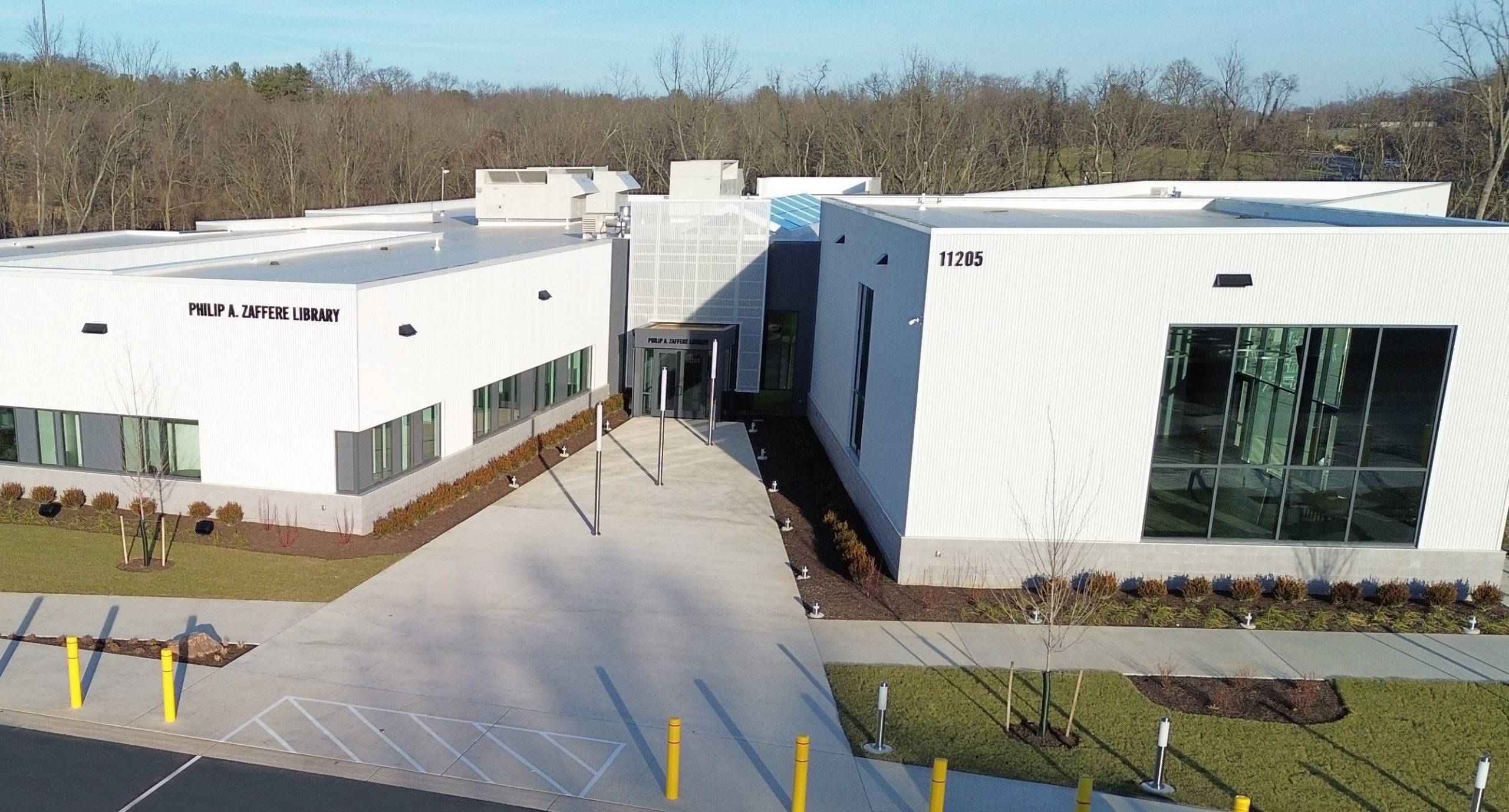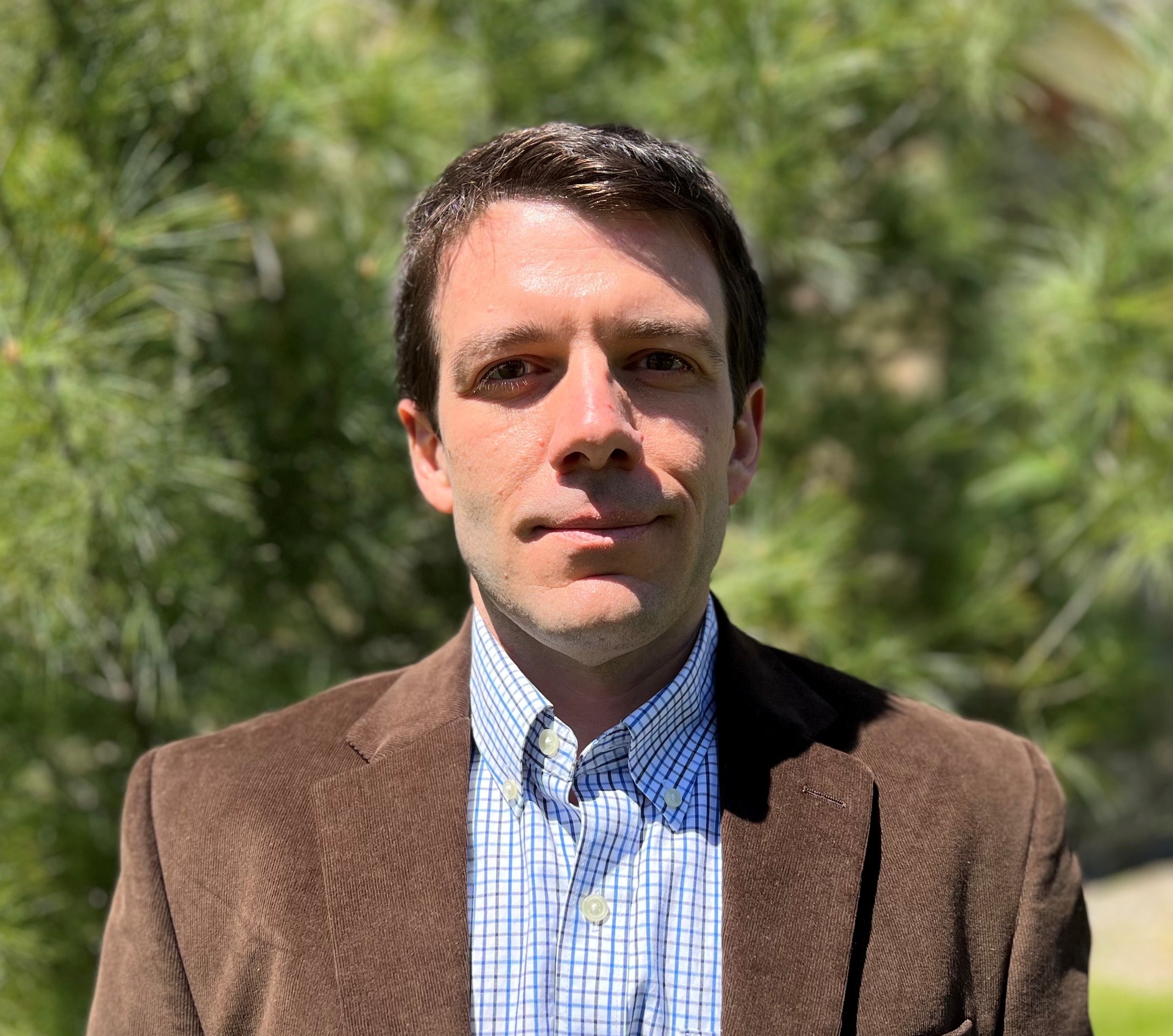Matthew Hudson Ph.D.
Education
- Ph.D., Chemistry (Physical/Materials), Syracuse University (2010)
- M.Phil., Chemistry, Syracuse University (2008)
- B.A., Chemistry, State University of New York, Potsdam (2006)
Professional Experience
- Stevenson University, Assistant Professor of Chemistry (2022 – Present)
- Colgate University, Visiting Assistant Professor of Chemistry (2020 – 2022)
- Stevenson University, Adjunct Professor of Chemistry (2019 – 2020)
- Materials Chemist, US Department of Commerce, National Institute of Standards and Technology, Center for Neutron Research (2014 – 2016)
- Materials Chemist, US Department of Energy, Office of Energy Efficiency and Renewable Energy, Advanced Manufacturing Office (2016)
- National Research Council (NRC) Postdoctoral Fellow, US Department of Commerce, National Institute of Standards and Technology, Center for Neutron Research (2012 – 2014)
- Postdoctoral Fellow, University of Maryland, Department of Materials Science & Engineering (2010 – 2012)
Research
The goal of my research is to prepare and post-synthetically modify different porous adsorbents in the form of metal-organic frameworks (MOFs) and zeolites. The desire is to design and build better capture and separation materials for room temperature gases and for other relevant porous materials chemistry. One particular aspect of the research focuses on separation of carbon dioxide emissions from power plant flue-gas streams. Due to global greenhouse gas emissions, the atmospheric CO2 level has risen to over 400 ppm, an increase of over 100 ppm from just 60 years ago. Post-combustion carbon capture and sequestration methods have been shown to be useful in stemming this rise in CO2 emissions however the current separation methods/materials are inadequate due to toxicity and cost. Powerplant flue-gas has low partial-pressures of carbon dioxide, compared to that of nitrogen, which makes finding a material that selectively captures CO2 at low partial pressures essential to making a great adsorbent material.
There are a couple of different post-synthetic approaches that are of particular interest: modification of MOFs/zeolites by polymerization with amines and epoxides, modification of zeolites with post-synthetic cation-exchange, and on a more global level, the investigation of a new solid-state computational approach to targeting material design. Students will use synthetic materials chemistry methods to prepare solid materials and post-synthetically modify different porous adsorbents and/or use computational chemistry to investigate solid adsorbents. In all situations, students will characterize these materials both in the chemistry department and with specialized instrumentation at UMD and NIST Center for Neutron Research as needed, and analyze and present the data collected.
Publications
- “Ultra-Dense Hydrogen in Small Pore Hydridic Framework”, H. Oh, N. Tumanov, V. Ban, X. Li, B. Richter, M. R. Hudson, C. M. Brown, G. N. Iles, D. Wallacher, S. W. Jorgensen, L. Daemen, R. Baldera-Xicohtenchal, Y. Cheng, M. Heere, M. Hirscher, T. R. Jensen, Y. Filinchuk, J. Am. Chem. Soc., submitted.
- “Combined experimental and computational study of CO2 adsorption in a series of sodalite MOFs with open metal sites, M-BTT”, M. Asgari, S. Jawahery, E. D. Bloch, M. R. Hudson, R. Flacau, B. Vlaisavljevich, P. G. Boyd, B. Smit, J. R. Long, C. M. Brown, W. L. Queen, Chem. Sci., 2018, 4579.
- “Separation of Xylene Isomers through Multiple Metal Site Interactions in Metal–Organic Frameworks”, M. I. Gonzalez, M. T. Kapelewski, E. D. Bloch, P. J. Milner, D. A. Reed, M. R. Hudson, J. A. Mason, G. Barin, C. M. Brown, J. R. Long, J. Am. Chem. Soc., 2018, 3412.
- “Electronic Conductivity in a Porous Vanadyl Prussian Blue Analog Upon Air Exposure”, M. A. Manumpil, C. Leal-Cervantes, M. R. Hudson, C. M. Brown, H. I. Karunadasa, Inorg Chem, 2017, 12682.
- “Reversible Capture and Release of Cl2 and Br2 with a Redox-Active Metal-Organic Framework”, Y. Tulchinsky, C. H. Hendon, K. A. Lomachenko, E. Borfecchia, B. C. Melot, M. R. Hudson, J. D. Tarver, M. D. Korzynski, A. W. Stubbs, J. J. Kagan, C. Lamberti, C. M. Brown, M. Dinca, J. Am. Chem. Soc., 2017, 5992.
- “On the Structure-Property Relationships of Cation-Exchanged ZK-5 Zeolites for CO2 Adsorption”, M. R. Hudson, T. D. Pham, C. M. Brown, R. F. Lobo, ChemSusChem, 2017, 10, 946.
- “Hydrogen Storage and Selective, Reversible O2 Adsorption in a Metal-Organic Framework with Open Chromium(II) Sites”, E. D. Bloch, W. L. Queen, M. R. Hudson, D. J. Xiao, J. A. Mason, L. J. Murray, C. M. Brown, J. R. Long, Angewandte Chemie, 2016, 55, 8605.
- “Hydrogen Storage in the Expanded Pore Metal-Organic Frameworks M2(dobpdc) (M = Mg, Mn, Fe, Co, Ni, Zn)”, D. Gygi, E. D. Bloch, J. A. Mason, M. R. Hudson, M. I. Gonzalez, R. L. Siegelman, T. A. Darwish, W. L. Queen, C. M. Brown, J. R. Long, Chem. Mater., 2016, 28, 1128.
- “Methane Storage in a Flexible Metal-Organic Frameworks with Intrinsic Thermal Management”, J. A. Mason, J. Oktawiec, M. K. Taylor, M. R. Hudson, J. Rodriguez, J. E. Bachman, M. I. Gonzalez, A. Guagliardi, C. M. Brown, P.P. Llewllyn, N. Masciocchi, J. R. Long, Nature, 19 November 2015, p. 357-361.
- “Molecular Basis for the High CO2 Adsorption Capacity of Chabazite Zeolites”, M. R. Hudson, T. D. Pham, C. M. Brown, R. F. Lobo, ChemSusChem, 2014, 7 (11), 3031. (Cover Article)
- “Comprehensive Study of Carbon Dioxide Adsorption in the Metal-Organic Framework M2(dobdc) (M = Mg, Mn, Fe, Co, Ni, Cu, Zn)”, W. L. Queen, M. R. Hudson, E. D. Bloch, J. A. Mason, M. I. Gonzalez, J. S. Lee, D. Gygi, J. D. Howe, K. Lee, T. A. Darwish, M. James, V. K. Peterson, S. J. Teat, B. Smit, J. B. Neaton, J. R. Long, C. M. Brown, Chem. Sci., 2014, 5, 4569. (Featured Article)
- “Reversible CO Binding Enables Tunable CO/H2 and CO/N2 Separations in Metal−Organic Frameworks with Exposed Divalent Metal Cations”, E. D. Bloch, M. R. Hudson, J. A. Mason, W. L. Queen, J. M. Zadrozny, S. Chavan, S. Bordiga, C. M. Brown, J. R. Long, J. Amer. Chem. Soc., 2014, 136, 10752.
- “M2(m-dobdc) (M = Mg, Mn, Fe, Co, Ni) Metal−Organic Frameworks Exhibiting Increased Charge Density and Enhanced H2 Binding at the Open Metal Sites”, M. T. Kapelewski, S. J. Geier, M. R. Hudson, D. Stück, J. A. Mason, J. N. Nelson, Z. Hulvey, E. Gilmour, M. Head-Gordon, S. A. FitzGerald, C. M. Brown, J. R. Long, J. Amer. Chem. Soc., 2014, 136, 12119.
- “Selective Oxidation of Ethane to Ethanol by Nitrous Oxide in a Metal-Organic Framework with Coordinatively-Unsaturated Iron(II) Sites”, D. J. Xiao, E. D. Bloch, J. A. Mason, W. L. Queen, M. R. Hudson, N. Planas, J. Borycz, A. L. Dzubak, P. Verma, K. Lee, F. Bonino, V. Crocellà, J. Yano, S. Bordiga, D. G. Truhlar, L. Gagliardi, C. M. Brown, J. R. Long, Nature Chem., 2014, 6, 590.
- “Water Adsorption in Metal-Organic Frameworks”, F. Gándara,H. Furukawa, Y.-B. Zhang, J. Jiang, W. L. Queen, M. R. Hudson, O. M. Yaghi, J. Amer. Chem. Soc., 2014, 136, 4369.
- “Design of a Metal-Organic Framework with Enhanced Back Bonding for the Separation of N2 and CH4”, K. Lee, W. C. Isley III, A. L. Dzubak, P. Verma, S. J. Stoneburner, L.-C. Lin, J. D. Howe, E. D. Bloch, D. A. Reed, M. R. Hudson, C. M. Brown, J. R. Long, J. B. Neaton, B. Smit, C. J. Cramer, D. G. Truhlar, L. Gagliardi, J. Am. Chem. Soc., 2014, 136, 698.
- “Unveiling Molecular Level Detail of CO2 Adsorption in Several Extensive Families of Metal-Organic Frameworks” W. L. Queen, J. Lee, E. D. Bloch M. R. Hudson, C. M. Brown, J. A. Mason, M. Gonzalez, J. R. Long, Preprint (248th ACS National Meeting & Exposition), 2014.
- “Tunable CO/H2 and CO/N2 Separations in Metal-Organic Frameworks with Exposed Divalent Metal Cations via Reversible CO Binding”, M. R Hudson, C. M. Brown, E. D. Bloch, J. A. Mason, S. Chavan, V. Crocellà, J. D. Howe, K. Lee, A. L. Dzubak, W. L. Queen, J. M. Zadrozny, S. J. Geier, L.-C. Lin, L. Gagliardi, B. Smit, J. B. Neaton, S. Bordiga, J. R. Long, NIST Center for Neutron Research Accomplishments and Opportunities, 2014, p. 12.
- “Oxidation of Ethane to Ethanol by N2O in an Iron(II) Metal-Organic Framework”, M. R. Hudson, C. M. Brown, D. J. Xiao, E. D. Bloch, J. A. Mason, W. L. Queen, N. Planas, J. Borycz, A. L. Dzubak, P. Verma, K. Lee, F. Bonino, V. Crocellà, J. Yano, S. Bordiga, D. G. Truhlar, L. Gagliardi, J. R. Long, NIST Center for Neutron Research Accomplishments and Opportunities, 2014, p. 18. (Cover article)
- “Correlations Between Structure and Gas-Adsorption / Separation Properties of Metal-Organic Frameworks”, W. L. Queen, J. Lee, M. Gonzalez, S. J. Geier, J. A. Mason, J. R. Long, C. M. Brown, M. R. Hudson, S. J. Teat, Trans. Amer. Crystal. Assn., 2013 Vol. 44, p. 120.
- “Separation of Hexane Isomers in a Metal-Organic Framework with Triangular Channels”, Z. R. Herm, B. M. Wiers, J. A. Mason, J. M. van Baten, M. R. Hudson, P. Zajdel, C. M. Brown, N. Masciocchi, R. Krishna, J. R. Long, Science, 24 May 2013, p. 960.
- “Selective Adsorption of Ethylene over Ethane and Propylene over Propane in the Metal-Organic Frameworks M2(dobdc) (M = Mg, Mn, Fe, Co, Ni, Zn)”, S. J. Geier, J. A. Mason, E. D. Bloch, W. L. Queen, M. R. Hudson, C. M. Brown, J. R. Long, Chem. Sci., 2013, 4, 2054.
- “Evaluation of Cation-Exchanged Zeolite Adsorbents for Post-Combustion Carbon Dioxide Capture”, T.-H. Bae, M. R. Hudson, J. A. Mason, W. L. Queen, J. J. Dutton, K. Sumida, K. J. Micklash, S. S. Kaye, C. M. Brown, J. R. Long, Energy Environ. Sci., 2013, 6, 138.
- “More Efficient Petroleum Refining Using a Highly Hexane-Selective Metal-Organic Framework”, M. R. Hudson, C. M. Brown, Z. R. Herm, B. M. Weirs J. A. Mason, J. M. van Baten, P. Zajdel, N. Masciocchi, R. Krishna, J. R. Long, NIST Center for Neutron Research Accomplishments and Opportunities, 2013, p. 14.
- “Spectroscopic Identification of Hydrogen Spillover Species in Ruthenium-Modified High Surface Area Carbons by Diffuse Reflectance Infrared Fourier Transform Spectroscopy”, J. L. Blackburn, C. Engtrakul, J. Bult, K. Hurst, Y. Zhao, Q. Xu, P. Parilla, L. Simpson, M. R. Hudson, C. M. Brown, T. Gennett, J. Phys. Chem. C., 2012, 116, 26744.
- “Unconventional and Highly Selective CO2 Adsorption in Zeolite SSZ-13”, M. R. Hudson, W. L. Queen, J. A. Mason, D. W. Fickel, R. F. Lobo, C. M. Brown, J. Am. Chem. Soc., 2012, 134, 1970.
- “Hydrogen Adsorption in the Metal-Organic Frameworks Fe2(dobdc) and Fe2(O2)(dobdc)”, W. L. Queen, E. D. Bloch, C. M. Brown, M. R. Hudson, J. A. Mason, V. K. Peterson, J. R. Long, Dalton Trans., 2012, 41, 4180.
- “Powder Neutron Diffraction Reveals New CO2 Adsorption Interactions in Chabazite Zeolites”, M. R. Hudson, W. L. Queen, J. A. Mason, D. W. Fickel, R. F. Lobo, C. M. Brown, NIST Center for Neutron Research Accomplishments and Opportunities, 2012, p. 16. (Cover Article)
- “Site Specific CO2 Adsorption and Zero Thermal Expansion in an Anisotropic Pore Network”, W. L. Queen, C. M. Brown, D. K. Britt, M. R. Hudson, P. Zajdel, O. M. Yaghi, J. Phys. Chem. C., 2011, 115, 24915.
- “Nature of CO2 Adsorption in Mg-MOF 74: A Combined Neutron Diffraction and First-Principles Study”, W. L. Queen, C. M. Brown, M. R. Hudson, D. K. Britt, W. Zhou, T. Yildirim, O. M. Yaghi, NIST Center for Neutron Research Accomplishments and Opportunities, 2011, p. 34.
- “The Vibrational Spectrum of Parabanic Acid by Inelastic Neutron Scattering Spectroscopy and Comparison with Solid-State DFT”, M. R. Hudson, D. G. Allis, T. M. Korter, B. S. Hudson, J. Phys. Chem. A, 2010, 114, 3630.
- “A Terahertz Investigation of S-(+)-Ketamine Hydrochloride Utilizing Solid-State Density Functional Theory”, P. M. Hakey, M. R. Hudson, D. G. Allis, W. Ouellette, T. M. Korter, J. Phys. Chem. A, 2010, 114, 4364.
- “Density Functional Dependence in the Theoretical Analysis of the Terahertz Spectrum of the Illicit Drug MDMA (ecstasy)”, P. M. Hakey, D. G. Allis, M. R. Hudson, T. M. Korter, IEEE Sensors Journal, 2010, 10 (3), 478.
- “Examination of Phencyclidine Hydrochloride via Cryogenic Terahertz Spectroscopy, Solid-State Density Functional Theory and X-ray Diffraction”, P. M. Hakey, M. R. Hudson, D. G. Allis, W. Ouellette, T. M. Korter, J. Phys. Chem. A, 2009, 113 (46), 13013.
- “Low-Temperature X-ray Structure Determination and Inelastic Neutron Scattering Spectroscopic Investigation of L-Alanine Alaninium Nitrate, a Homologue of a Ferroelectric Material”, M. R. Hudson, D. G. Allis, W. Ouellette, B. S. Hudson, Phys. Chem. Chem. Phys., 2009, 11, 9474.
- “Low-Temperature X-ray Structure Determination and Inelastic Neutron Scattering Spectroscopic Investigation of Glycine Lithium Sulfate”, M. R. Hudson, D. G. Allis, P. M. Hakey, W. Ouellette, B. S. Hudson, J. Mol. Struct., 2009, 934 (1-3), 138.
- “An Investigation of (1R,2S)-(-)-Ephedrine via Solid-State Density Functional Theory and Cryogenic Terahertz Spectroscopy”, P. M. Hakey, D. G. Allis, M. R. Hudson, W. Ouellette, T. M. Korter, ChemPhysChem, 2009, 10, 2434.
- “The Inelastic Neutron Scattering Spectrum of Nicotinic Acid and its Assignment by Solid-State Density Functional Theory”, M. R. Hudson, D. G. Allis, B. S. Hudson, Chem. Phys. Lett., 2009, 473 (1–3), 81.
Teaching
- CHEM 110 Foundational General, Organic, & Biochemistry
- CHEM 110L Foundational General, Organic, & Biochemistry Laboratory
- CHEM 114 General Chemistry I w/ Problem Solving
- CHEM 115 General Chemistry I
- CHEM 115L General Chemistry I Laboratory
- CHEM 116 General Chemistry II
- CHEM 116L General Chemistry II Laboratory
- CHEM 211L Organic Chemistry II Laboratory
- CHEM 365 Independent Laboratory Research in Chemistry
- CHEM 435 Special Topics: Materials Chemistry
DISCLAIMER: The content of this faculty profile page was created, authored, and published by the identified faculty member. Stevenson University (SU) makes absolutely no guarantee as to the currency, accuracy, or quality of information published. The views and opinions expressed on this page or any links made available are strictly those of the author and do not necessarily state or reflect those of SU. The content of this profile page has not been reviewed or approved by Stevenson University.






